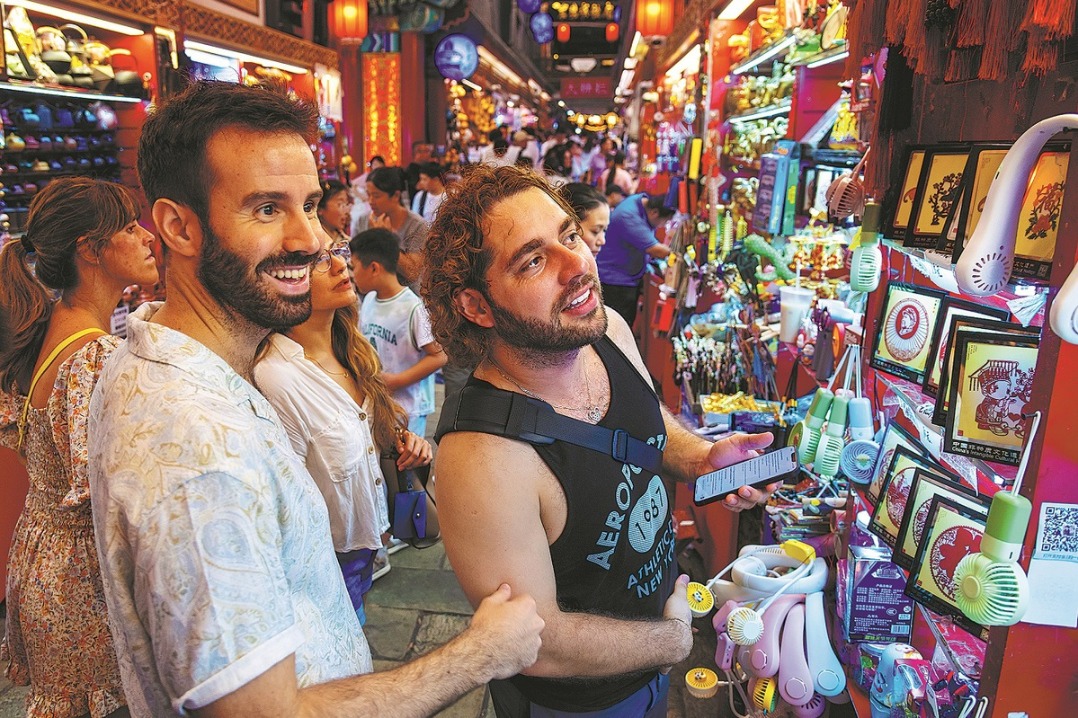What's on

Arts and crafts

From primitive colored pottery pieces and ceremonial bronze to jewelry and statues, objects of arts and crafts stand as testimony to the economic and social development in different periods of time, as well as lifestyles, aesthetic views and regional cultures. Arts and crafts have played an important role in embodying a nation's spirit and forming people's cultural identity. Some 40 works by 14 leading figures of arts and crafts from Zhejiang province are now on show at Over the Mountains, an exhibition through to Nov 27 at Zhejiang Provincial Museum, to show how modern artists have enriched the presentation of traditional crafts. Zhejiang, one of the long-standing engines of the country's economy, has been home to seasoned artisans and artists. At the exhibition, many who participated are from a program of the museum that takes artists on visits to museums and cultural sites across the country.
9 am-5 pm, closed on Mondays. 25 Gushan Lu, Hangzhou, Zhejiang province. 0571-8601-3085/8796-0505.
Women behind textile

Ancient China witnessed prosperity in the textile industry. Behind the technical intricacy and artistic expressions were generations of dexterous and laborious women, who worked hard on weaving machines to better the lives of their families, and whose endeavors also contributed to the beauty of Chinese textiles as presented in handicraft objects. Scenes of women busy cultivating silk worms and weaving colorful threads were often depicted in the figure paintings of the Ming (1368-1644) and Qing (1644-1911) dynasties, in a way to emphasize the significance of agricultural and handicraft activities in the country. Infinite Beauty, an exhibition at Hunan Museum, in Changsha, shows classic figure paintings from the Ming and Qing eras, and accentuates the hardships of ancient women and their efforts to enrich social life while being confined to limited spaces. The exhibition closes on Oct 30.
9 am-5 pm, closed on Mondays. 50 Dongfeng Road, Changsha, Hunan province. 0731-8441-5833.
European porcelain

For over three centuries, Meissen porcelain, the first hard-paste porcelain produced in Europe, has been viewed as a trademark of excellence and delicacy. After it began manufacturing at a royal factory in Germany in 1710, it gradually won the hearts of royals, aristocrats and other members of high society in Europe, including Catherine the Great, who had decorated their life with ceramics transported all the way from China. The models and artistic styles of Meissen porcelain cast a profound influence on the ceramic industry in Europe, as it kept embracing emerging art trends, and skilled ceramic artists spread the style to other parts of Europe. The Gorgeousness of Porcelain, an exhibition through to Oct 28 at Changzhou Museum in Jiangsu province, displays over 100 vintage Meissen porcelain wares from the collection of the Museum of Modern Ceramic Art, Gifu, Japan. It is a celebration of porcelain art that boomed on a different continent and exhibited distinctive cultural taste.
9 am-5 pm, closed on Mondays. 1288 Longcheng Dadao Road, Changzhou, Jiangsu province. 0519-8516-5089.
China Daily
Today's Top News
- China's industrial profits down 1.8% in H1
- Thailand responds to Trump's ceasefire call
- Recall vote shows DPP's manipulation runs against Taiwan people's will: mainland spokesperson
- Top DPRK leader visits China-DPRK Friendship Tower
- China proposes global cooperation body on AI
- Scholars propose inclusive human rights framework






























